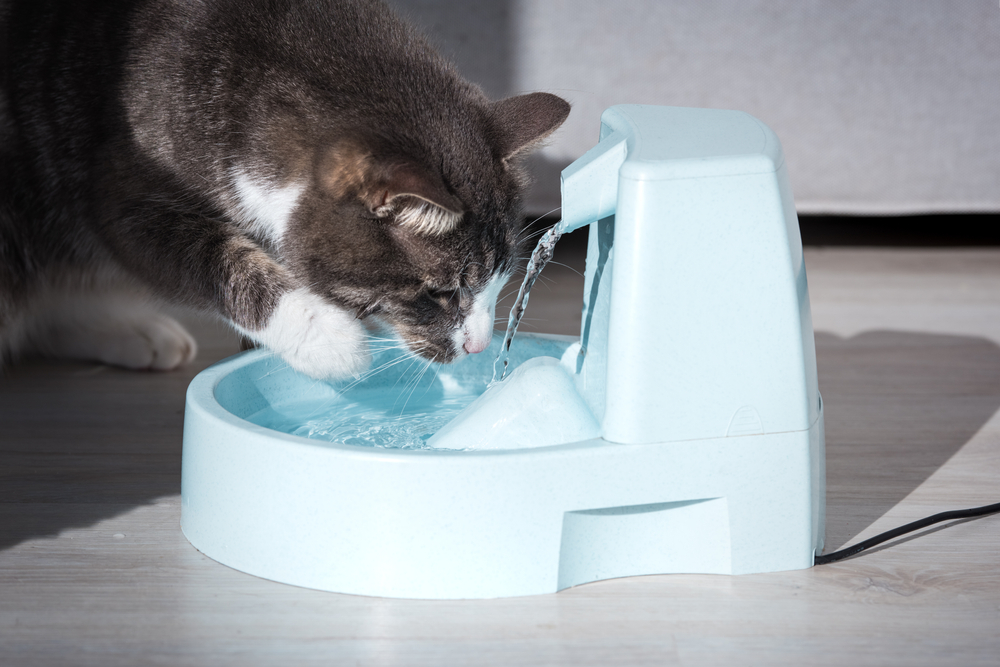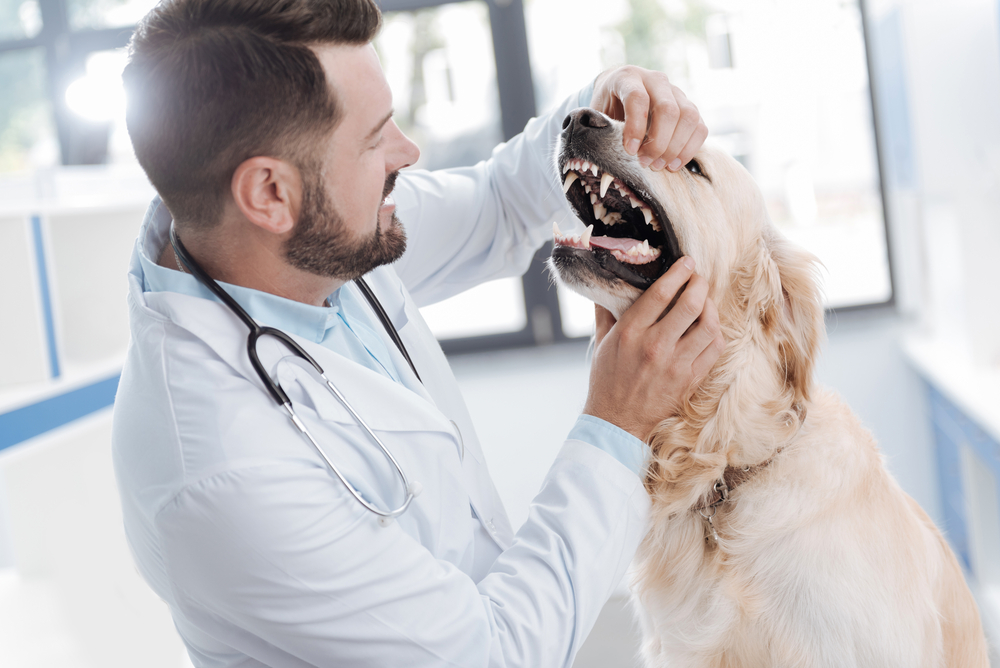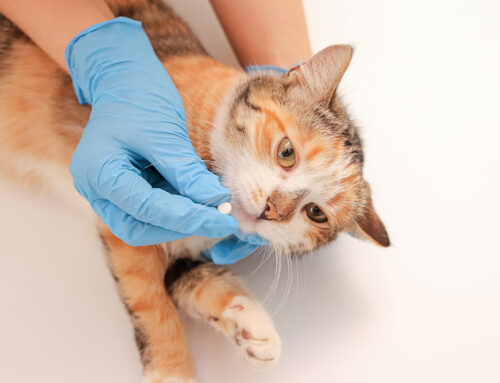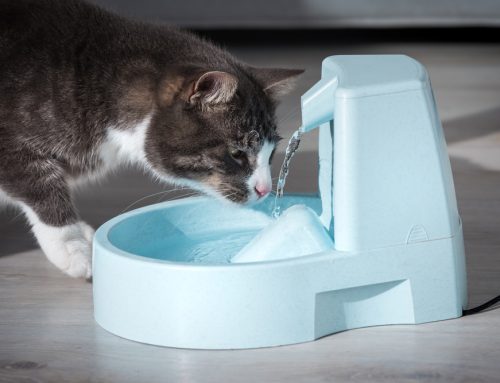February is National Pet Dental Health Month, and there’s no better way to show your pet some love than by maintaining their dental health. While your pet’s teeth are probably not high on the list of health conditions you worry about, they should be—most pets older than 3 years of age have some degree of dental disease, which is one of the most common medical conditions seen by veterinarians. Brush up on your dental disease knowledge, and use WesVet Animal Hospital’s five tips to take control of your pet’s dental health all year long.
#1: Know the cause of dental disease in pets
First, let’s be clear about dental disease. Dental disease is caused by oral bacteria that deposit plaque on your pet’s teeth hours after eating. The plaque hardens into tartar in 24 hours, unless regularly brushed off the tooth surfaces—making daily brushing important. The bacteria from plaque and tartar can move below the gum line, attacking the periodontal ligaments that anchor the teeth in their bony sockets. Periodontal inflammation and infection eventually lead to ligament breakdown, and the affected tooth roots become infected and loose, causing significant pain for your pet—whether or not they show their discomfort. And, dental disease can cause problems that extend far beyond your pet’s teeth, including:
- Kidney, heart, and liver problems — Bacteria from plaque and tartar buildup can leak into your pet’s bloodstream, causing damage to these essential organs.
- Tooth root infections — These most commonly occur in the large, three-rooted carnassial teeth on the upper jaw.
- Under-eye swelling — Tooth root abscesses can result in a pus-filled swelling below the eye that may be confused with an eye or facial problem.
#2: Monitor your pet for early dental disease signs
Early dental disease signs are easy to miss in pets, making regular inspection of your pet’s teeth and mouth critical. In addition to bad breath, the following signs may indicate dental problems:
- Brown or yellow tartar buildup on the teeth
- Red, swollen gums
- Broken or loose teeth
- Excessive drooling
- Decreased appetite
- Swallowing food whole, instead of chewing
- Leaving broken crumbs around their bowl after eating
- Taking food from their bowl to eat somewhere else
- Blood in their water bowl or on their toys
- Shying away from being touched near their face
Checking your pet’s mouth frequently can prevent dental disease progression, allowing treatment to begin before the problem causes pain and widespread infection. If you recognize these signs in your pet, schedule a dental evaluation so our team can assess their dental health, and address any problems.
#3: Create an oral-health routine for your pet
Prevention is key to protect your pet from dental disease. Like humans, your pet needs an oral health routine—ideally, brushing daily or a few times a week at a minimum—to ensure their mouth remains healthy and disease-free. Use the following tips to start a toothbrushing routine with your pet:
- Choose correctly — Select an appropriately sized brush and veterinary-approved, flavored toothpaste. A child-size toothbrush or a finger brush usually work best. Avoid human toothpaste, which contains fluoride that is unsafe for pets if swallowed.
- Let them lick — Allow your pet to lick the flavored toothpaste from your finger, and follow up with a treat. Next, rub your finger over your pet’s tooth surfaces. Repeat with the toothbrush, focusing on the outer surfaces only—your pet’s tongue will take care of the inner surfaces.
- Praise profusely — Positively reinforce toothbrushing by following up with praise, a special treat, or a fun activity.
#4: Team up with your veterinarian to maintain your pet’s oral health

In addition to regular toothbrushing, your veterinarian should examine your pet’s teeth and gums, to look for early dental disease signs. They may recommend a professional cleaning, along with dental X-rays, to look for dental problems under the gum line invisible to the naked eye. Your veterinarian can also recommend effective dental products and treats to supplement your pet’s toothbrushing routine, such as:
- Dental chews and treats
- Food and water additives
- Oral rinses and wipes
- Prescription dental diets
When choosing a pet dental care product, look for the Veterinary Oral Health Council (VOHC) seal of acceptance, which is awarded to products proven to slow plaque and tartar accumulation.
We love our pets, who bring us so much joy. Pet Dental Health Month gives us the opportunity to show our love by keeping them pain-free and dental-disease-free. If you have any questions about your pet’s oral health, we can answer them. Contact WesVet Animal Hospital, to schedule your pet’s next wellness and dental examinations.







Leave A Comment